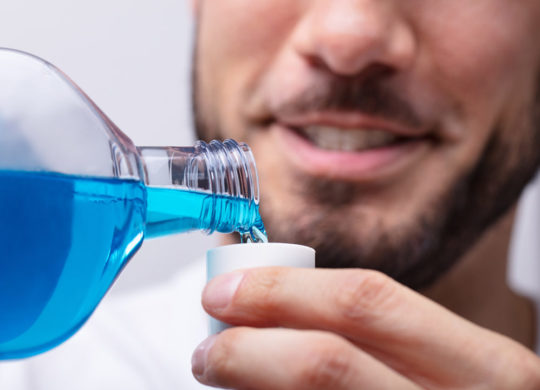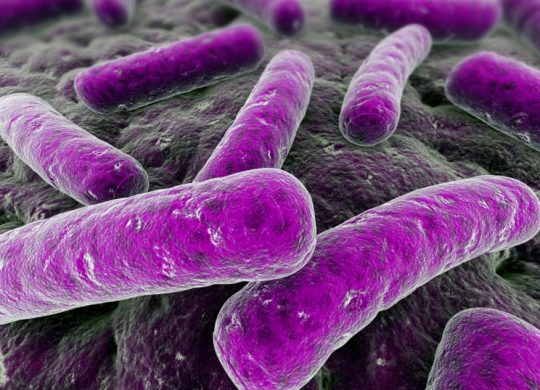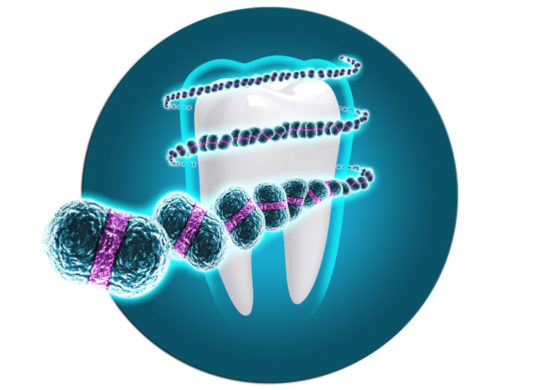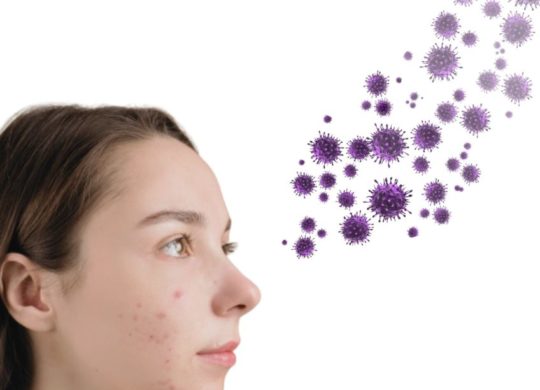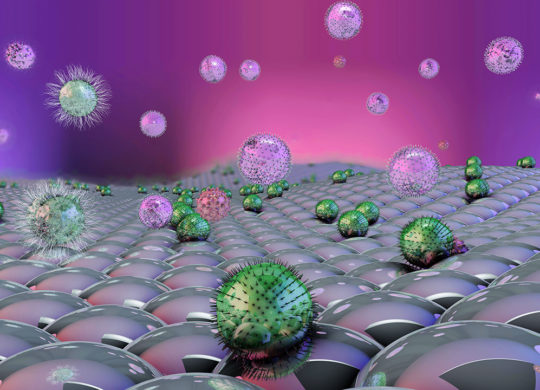Abstract
The skin microbiota is not a trend anymore. It reached the status of a game changing discovery. Claims as probiotic, postbiotic and prebiotic are increasingly enriching labels of freshly launched products. But what about the legislation? Are these approaches still within the cosmetic legislation EC 1223/2009 and the criteria for justifying claims EU655/2013. This review proposes a concrete strategy to commercialize microbiota derived cosmetics within the EU legislation, now and in the future.
Introduction
Just a few years ago microorganisms were still considered as a threat to the skin and to cosmetic products. Antimicrobial, disinfectant and sterile were the buzz words in a not so distant past. Today the microorganisms are the absolute heroes of the beauty industry. They seem to have the magic key to our beauty.
The information on the skin microbiota is evolving rapidly, while our human brain seems to be too limited to understand the microbial world. The skin microorganisms keep hiding their secret in plain sight. To understand the microbial universe, the reality is often simplified. With this unknowledge, solutions are already created for undiscovered problems. We shower the skin microbiota with probiotics, postbiotics and prebiotics. But does the skin microbiota need this help? Are these products not just bringing rain to the ocean? When a product truly influences the skin microbiota, does this effect still fall under the cosmetic legislation? To find concrete answers we need to go back to the very basics of the legislation.
The first concern: Are skin microbiota products safe?
Already on the very first page of the legislation EC 1223/2009 the word safety appears: “Cosmetic products should be safe under normal or reasonably foreseeable conditions of use”. The EU-legislation is focussed on the safety of the individual ingredients. Therefore, the ingredients supporting the skin microbiota cannot occur on the list of prohibited substances (Annex II). Apparently, none of these ingredients (prebiotics, probiotics and postbiotics) occur directly on Annex II. However, toxins and antibiotics are prohibited in cosmetics under entry 323. Microorganisms can produce antimicrobial peptides and thiopeptides which are forbidden toxins. Therefore, it will be crucial when using a probiotic/postbiotic to prove that the microorganism is not synthetizing any toxin. The use of food probiotics/postbiotics based on Lactobacilli, Bifidobacteria or food yeast and fungi like Saccharomyces cerevisiae and Candida utilis are the safest choice. These probiotics/postbiotics have a long history of safety in food applications. Some of these probiotics have even obtained the GRAS-status.
The situation is more complex for non-food probiotics/postbiotics. In that case proof needs to be presented that the non-food probiotic/postbiotic does not produce any toxins. According to this reasoning the use of Staphylococcus epidermidis is not allowed, as it is producing many different toxins (1).
Beside the prohibition of microbial toxins, both the EC 1223/2009 and the SCCS is not further restricting the skin microbiota ingredients.
Are skin microbiota products within the definition of a cosmetic?
A cosmetic product is quite precisely defined. The definition has 2 parts. The first part refers to the place of use, while the second part refers to the function of a cosmetic product.
Part 1: The place
A product can only be considered as a cosmetic when it is used on the external parts of the human body. The EC 1223/2009 lists these parts precisely, as specified below, to avoid any confusion in such definition:
- Epidermis
- Nails
- Hair
- Lips
- Teeth and oral cavity
- External genitals
The definition refers to the “human” body. However, the skin microbiota is everything except human. Although the skin microbiota is not human, there is enough convincing scientific evidence that it belongs to the epidermis (2, 3). The epidermis is clearly listed in the definition. There are many peer reviewed articles proving this reasoning:
- the resident skin microbiota is attached to the skin with adhesins, just as the epidermis is attached to the dermis (4),
- the resident skin microbiota regulates the inflammation process of our skin in a beneficial way (5, 6),
- the resident skin microbiota protects the skin from unwanted fungi and bacteria. Therefore, it fulfils the primary function of the skin: protection (1,2).
It can be concluded that the resident skin microbiota falls within the first part of the definition for a cosmetic product. The resident skin microbiota consists mainly of the genus Micrococci, Staphylococci, Corynebacteria, Brevibacteria, Cutibacteria and Malassezia(4). The resident oral microbiota is mainly populated by Streptococci, while the vaginal microbiota is mainly about Lactobacilli. To stay undoubtedly within the cosmetic definition, the microbiota derived product should support only these microorganisms.
Part 2: The function
A product can only be considered as a cosmetic if it performs following tasks:
- Cleaning
- Perfuming
- Changing appearance
- Keeping in a good condition
- Correcting body odour
Skin microbiota derived products need to precisely define what is their purpose. The main reason to work on the microbiota is:
- to make products milder and more skin compatible
- to make products more performing, especially when it comes to body odours.
These skin microbiota derived products are performing the tasks: keeping in a good condition and correcting body odour.
Only the above described skin microbiota derived products can be considered as cosmetics.
What kind of skin microbiota claims are allowed?
It is often forgotten that a cosmetic product is only allowed to keep the skin healthy. Nothing more, nothing less. In other words, a cosmetic product is not allowed to change the biochemical processes occurring in the epidermis. Since the resident skin microbiota belongs to the epidermis, it is not allowed to change it.
Products claiming that they support and protect the skin microbiota are clearly allowed. A non-exhaustive summary of allowed claims is:
- Protects the microbiota
- Microbiota friendly
- Supports the microbiota
- Makes the skin beautiful through the skin microbiota
- Makes your skin stronger
However, products claiming that they stimulate or improve are not cosmetic products. A non – exhaustive summary of non-cosmetic claims is:
- Boosts the microbiota
- Improves the microbiota
- Reduces acne through the microbiota
- Improves the diversity is a particular non-cosmetic claim. First, there are no peer reviewed articles proving that a higher diversity protects the skin more efficiently. On the contrary, it is proven that a well hydrated skin has a lower diversity than a dry skin (7). Moreover, it is also confirmed that an infected skin has a low diversity. This means that one microorganism rules over all the others. In the case of infected skin, the low diversity needs to be increased. The microorganism that causes the infection needs to be overruled and the resident skin microbiota needs to recolonize the skin surface again. However, an infected skin is not the scope of a cosmetic product. Cosmetic products are only allowed to keep the skin healthy, not to make it healthy again.
What are probiotics, postbiotics and prebiotics?
Cosmetic products can seduce the consumer. They are not allowed to mislead. Cosmetic products are also not allowed to denigrate their competitors. This is described in more complicated sentences in EU 655/2013. To be taken seriously by the consumer, it is essential that the definitions are set right and are according to the expectations of the consumer.
Although the definition for pro-, post- and prebiotics:
- are not officially recognized,
- are changing constantly and
- are initially meant for the gut microbiota,
the essential meaning has never changed.
What is a Probiotic?
A probiotic is according to the WHO 2001: Live microorganisms which, when administered in adequate amounts, confer a health benefit on the host (8).
Essential is that a living microorganism is provided in the product.
Products claiming to be using a probiotic, while they use merely:
- deactivated (= synonym for killed) microorganisms,
- fermented ingredients,
- lysates
are not within the EU 655/2009. This is not just misleading to the consumer, but it is also denigrating for brands that are really providing living microorganisms in their products and are therefore investing in new technologies to incorporate these living microorganisms.
What is a Postbiotic?
Postbiotics are defined as non-viable bacterial products or metabolic by-products from probiotic microorganisms that have a biologic activity in the host (8). This definition is quite troublesome in cosmetic applications for 2 reasons:
- A postbiotic must have a biologic activity, which is not within the spirit of the cosmetic legislation. Cosmetic products are not supposed to interfere with biologic processes in the epidermis.
- The definition makes no difference between lysates and other sophisticated postbiotic, and quite common ingredients such as lactic acid. The latter is indeed a by-product of the probiotic Lactobacillus. Lactic acid is commonly used as a pH regulator. With this definition the meaning of microbiota derived products can become hollow and again might denigrated brands that seriously invest in the skin microbiota.
What is a prebiotic?
There are many different definitions for prebiotics. All of them have 2 criteria in common (8):
- A prebiotic must be bio selective. This means that it can only be fermented by certain microorganisms, while unwanted microorganisms cannot ferment the prebiotic. In this way, the unwanted microorganisms are in a disadvantage position to proliferate.
- This bio selective effect is beneficial for the host.
The term prebiotic is often used incorrectly for antimicrobial agents that kill selectively specific microorganisms such as Cutibacterium acnes or Malassezia. Prebiotics are food that supports the microbiota in performing its epic task: protecting the skin.
How to safely balance pre- and probiotics with microbial contamination?
Prebiotics selectively supports the growth of certain microorganisms, while probiotics are living microorganisms. Microorganisms are the usual and primary suspect to have a negative impact on our health. Indeed, the microorganisms of table 1 are dangerous to our safety.
A prebiotic however can only support beneficial microorganisms. If a prebiotic would stimulate one of the microorganisms from table 1, it would not be a prebiotic. It is also described that a prebiotic, such as inulin do not increase the dosage of preservative in order to pass a challenge test. Increasing preservatives can make a product less mild, which cannot be the purpose of microbiota derived products. Inulin does not influence the result of a challenge test at all (9).
Probiotics are by definition not harmful. When a probiotic is within legislation EC 1223/2009, it cannot produce toxins. Therefore, probiotics can never be a microorganism from table 1. However, the added living microorganisms will be affected by the preservative system which leads to 2 fundamental problems:
- The probiotic is killed. Therefore, claiming that the product contains a probiotic is misleading.
- A preservative is not active anymore when killing a microorganism (the probiotic). A partly deactivated preservative system results in a product that will not pass a challenge test and is therefore a health risk: pathogenic microorganisms of table 1 can contaminate the product. When a product does not pass a challenge test, it is not within the legislation EC 1223/2009.
Therefore, when formulating with probiotics it is crucial:
- to separate the probiotic physically from the rest of the formulation, through e.g. encapsulation
- to make sure that the consumer cannot contaminate the product while using the product. This can be achieved using unidoses or packaging with innovative closures.
The last concern is the microbial count in the product. The SCCS clearly indicates that the microbial contamination (TVC) cannot be above 1000 cfu/g. When using a probiotic, the TVC will be substantially higher. However, a probiotic is not a contamination. It is an intentionally added beneficial microorganism. When using a probiotic, it is necessary to identify the specie that is responsible for the high microbial count in the cosmetic product. In this way it is proven that the microorganism in the product is truly the safe probiotic and is not an unwanted contamination.
Conclusion
- Skin microbiota derived products can be aligned with the EU-legislation, provided
- that their safety is demonstrated
- that the claims are not out of the cosmetic scope and
- That the claims are not misleading.
Table 1: Pathogenic microorganisms occurring in cosmetic products
| Staphylococcus aureus |
| Escherichia coli |
| Pseudomonas aeruginosa |
| Candida albicans |
| Aspergillus brasiliensis |
| Salmonella |
| Enterobacteria |
Ref
- O’ Sullivan et al., Microbiology Ecology 2019
- Cogen et al., Br. J. Dermatol 2008
- Gallo et al., Cell Host & Microbiome 2015
- Roth & James, Ann. Rev. Microbiol 1988
- Chen et al., Nature 2018
- Skabytska & Biedermann, J. Inv. Dermatol. 2016
- Lee et al., Microbiology Open 2017
- Patel & Denning, Clin Perinatol 2013
- Challenge test report acc to Ph Eur, Gobiotics 2018
Contact US
GOBIOTICS BV
Jac Jansenweg 7
4631 SL Hoogerheide
The Netherlands
